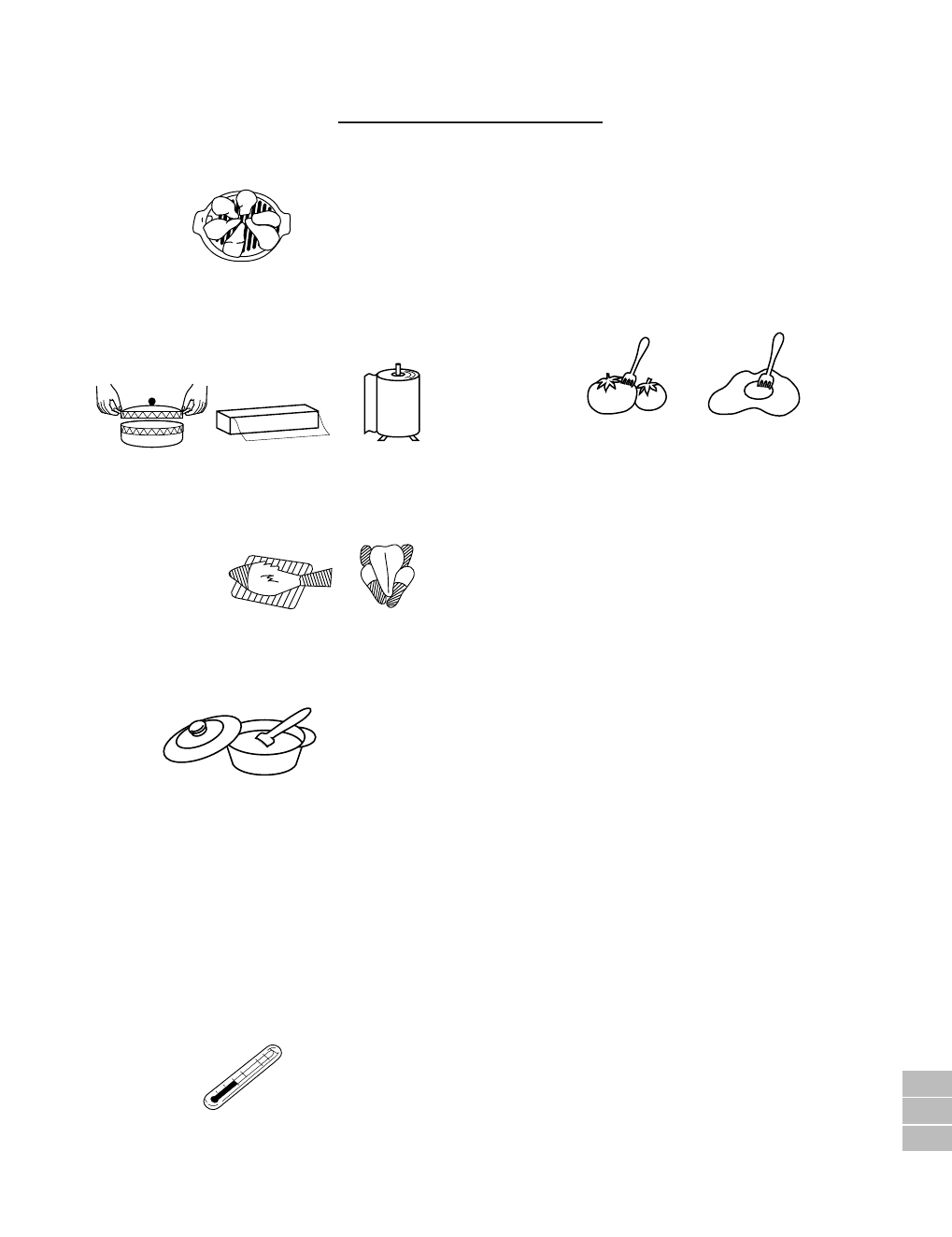
16
A30019, SCA R2197 O/M
2. TURNING
Foods such as poultry and joints of meat should be
turned over after half the cooking time.
4. PIERCING
Pierce potatoes, eggs, tomatoes or any foods with
a skin or membrane to allow steam to escape.
6. STANDING TIME
Standing time is important. After cooking or de-
frosting ensure adequate standing time. This al-
lows the food to continue cooking or heating.
8. SIZE
Small pieces cook faster than large ones. To
speed cooking, cut pieces smaller than 5 cm so
microwaves can penetrate to the centre from all
sides. For even cooking, make all the pieces the
same size.
10. FAT AND BONE
Marbling within meat, or a thin, even layer of fat on
a roast, speeds cooking. Large fatty areas or
excess drippings in dish attract energy away from
meat, and slows cooking. Centre bones do not
affect cooking, but bone on the side of meat
conducts heat to the areas next to it.
12. QUANTITY
Microwave cooking times are directly related to
the amount of food in the oven. Because energy
is absorbed by the food itself, one potato or a
single piece of chicken cooks rapidly. When the
energy is divided among several items, cooking
takes more time.
14. GENERAL
Your microwave oven is capable of heating food
and beverages very quickly therefore, it is very
important that you select the appropriate cooking
time and power level for the type and quantity of
food to be heated. If you are unsure of the cooking
time and power level required, begin with low
cooking times and power levels until the food is
sufficiently heated evenly throughout.
1. THE ARRANGEMENT
Arrange foods carefully. Place thickest areas to-
ward outside of dish.
3. COVERING
Cover foods in the microwave if you would normally
cover the food in your ordinary oven, or to retain
moisture. Cover foods such as Vegetables, Casse-
roles, or when Reheating.
Use to cover foods:
5. SHIELDING
Shield using small pieces of aluminium foil to shield
thin areas of meat, fish and poultry or edges of
cakes to prevent overcooking.
7. STIRRING
Stir foods from the outside to the centre of the dish,
once or twice during cooking if possible.
Eg. Casseroles and Sauces.
9. DENSITY
The depth to which microwaves penetrate food
varies depending on the food's density. Porous
foods like minced beef or mashed potatoes micro-
wave faster than dense ones like steak or whole
potatoes
11. STARTING TEMPERATURE
Frozen or refrigerated foods take longer to heat
than food at room temperature. Cooking times in
this book are based on normal storage tempera-
tures. Since rooms, refrigerators and freezers differ
in temperature, check cooking result at the mini-
mum time.
13.CONDENSATION
Condensation is a normal part of microwave cook-
ing. The humidity and moisture in food will influence
the amount of condensation in the oven. Generally,
covered foods will not cause as much condensation
as uncovered foods. Ensure that the ventilation
openings are not blocked.
HELPFUL HINTS
PAPER TOWELPLASTIC WRAP
LID
CHICKENFISH
TOMATO
EGG
SCA R219711-19 03.10.10, 6:20 PM16


















